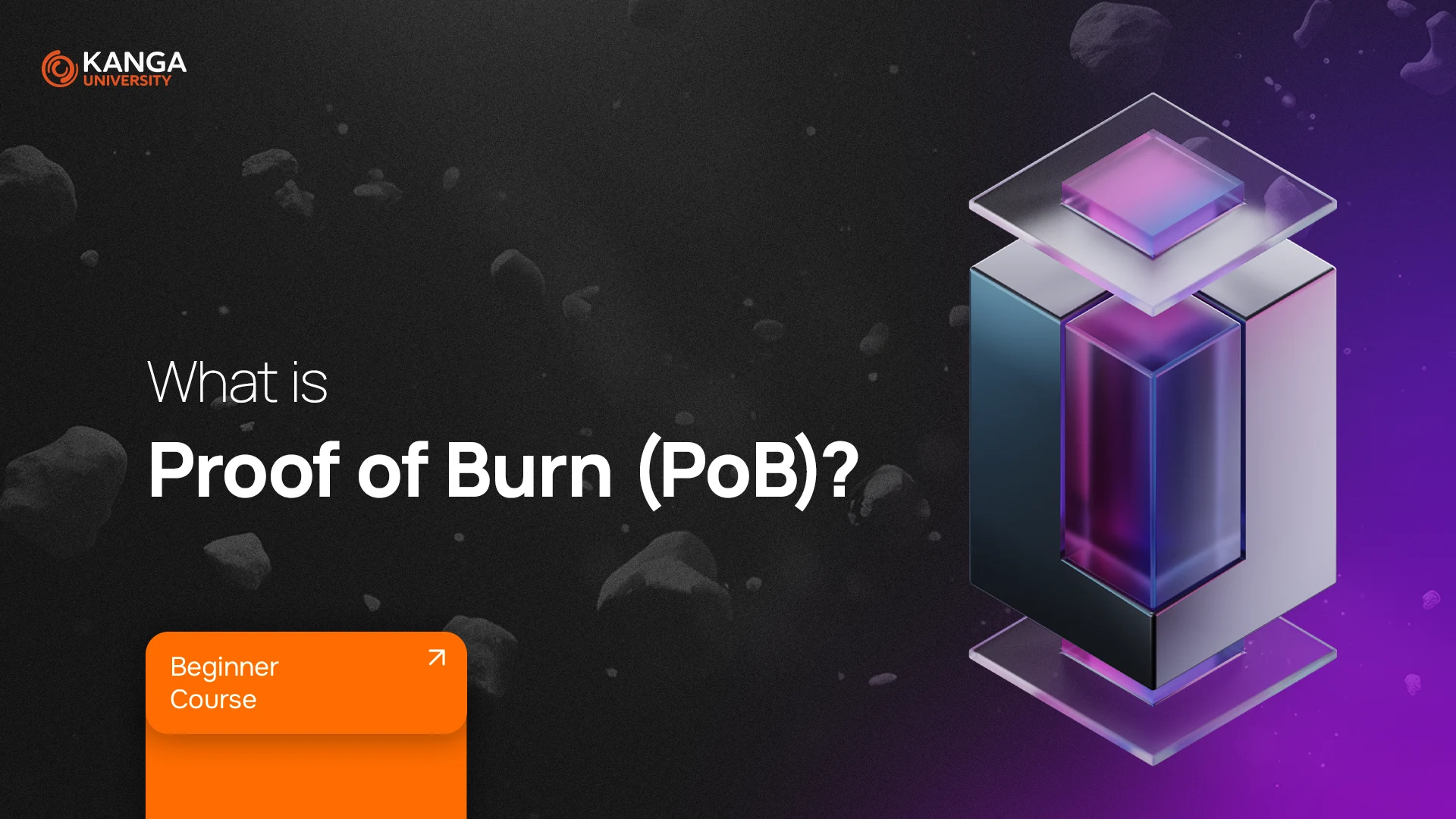
In our academy, we have already discussed many consensus mechanisms such as Proof of Stake, Proof of Work, and Proof of Authority (PoA). Today, we focus on another one – Proof of Burn (PoB). In blockchain networks, consensus mechanisms are key for users to accept new updates. Proof of Burn is one such mechanism, based on the concept of burning cryptocurrencies.
What Is Proof of Burn?
Proof of Burn is a consensus mechanism whose name reflects its core idea – burning coins. In this system, miners achieve consensus by irreversibly removing a certain number of coins from circulation. The process of burning coins means permanently deleting them from availability, which serves as confirmation of a given transaction. The more coins a miner burns, the greater their chance of adding a block to the blockchain.
Compared to other consensus mechanisms like Proof of Stake and Proof of Work, Proof of Burn has some distinctive features. It limits energy consumption, making it more environmentally friendly. Additionally, unlike other mechanisms, Proof of Burn does not require miners to stake coins to earn the right to add a new block to the network.
One of the most recognizable versions of Proof of Burn was developed by Ian Stewart, one of the pioneers of this concept. The essence of Proof of Burn is not only about burning coins but also about investing native tokens of a given ecosystem in virtual mining platforms, known as “mining powers.” This allows miners who operate multiple mining platforms or invest a significant amount of coins to gain a chance to add a new block to the network.
It’s important to note that the number of coins burned by a miner reflects their commitment to the network. The more coins eliminated in the burning process, the more their contribution and dedication to the proper functioning of the ecosystem are emphasized.
Proof of Burn fits into the evolution of consensus algorithms, presenting a more eco-friendly and flexible approach to creating and maintaining secure blockchain networks.
How Does Proof of Burn Work?
In the Proof of Burn consensus mechanism, participating miners perform specific actions to prove their commitment by burning coins. The process includes the following steps:
- Coin burning: A miner sends a specified number of coins to a dedicated wallet address created for this purpose, which does not allow the coins to be recovered later. These wallets, often called “burn wallets,” are generated randomly and do not have associated private keys.
- Permanent removal: When coins are sent to a burn wallet, they are permanently and irreversibly burned. The wallet itself becomes unusable and inaccessible.
- Network security: The burned coins then contribute to strengthening the security of the entire blockchain network.
To illustrate, imagine a blockchain network with five miners, each with their own block of transactions. According to Proof of Burn, to join their transactions to the blockchain, these miners must burn a certain number of coins. In practice, the miner who burns the largest number of coins gains an advantage, earning the opportunity to add their block to the network and participate in the consensus process.
Once the block from the miner who burned the most coins is added, it is verified by validators associated with the ecosystem. If validators detect any irregularities and deem the block invalid, then the block from the next miner who burned more coins is accepted and added to the network.
Although at first glance, Proof of Burn might seem unfair, this algorithm actively promotes periodic coin burning, countering bias among both new and experienced participants in the blockchain network.
It’s also worth emphasizing that the network’s mining power decreases each time a miner successfully adds a new block. Additionally, the Proof of Burn mechanism motivates miners to regularly burn their coins, rather than treating the process as a one-time investment, thereby maintaining ongoing engagement and activity within the ecosystem.
Advantages and Disadvantages
Advantages:
- Energy efficiency: Proof of Burn uses significantly less computational power and electricity compared to other popular consensus mechanisms like Proof of Work, which benefits the environment.
- Encourages regular transactions: By periodically burning coins, the system motivates miners to remain active in the network, promoting its overall smooth operation.
- Low hardware requirements: This mechanism does not require miners to own expensive, heavy-duty computing equipment typically associated with Proof of Work. All that’s needed is a cryptocurrency wallet from which coins can be burned.
- Long-term commitment: Proof of Burn is often used to create long-term commitments in blockchain networks, signaling sustained engagement in a project, which contributes to the ecosystem’s stability and durability.
Disadvantages:
- High entry barrier: To use the Proof of Burn mechanism, a miner must possess a sufficient number of coins to burn. This requires a certain level of wealth, which can be a barrier for some participants.
- Limited global testing: Proof of Burn has not yet been widely tested or studied in large, global blockchain ecosystems. This uncertainty may raise questions about its effectiveness and scalability in larger projects.
- Slower consensus process: Compared to some other consensus mechanisms, Proof of Burn might be slightly slower due to the time required for coin burning, which can affect the speed of transaction processing within the network.
Examples of Use
Proof of Burn is a relatively new consensus algorithm compared to more well-known and developed mechanisms like Proof of Work and Proof of Stake. Its application is often more experimental and tied to exploring new solutions for blockchain consensus.
Only a few coins are available for burning under the Proof of Burn mechanism, and not all blockchain projects include this functionality. However, cryptocurrencies such as BitShares, Counterparty, and Slimcoin are examples where coins can be burned to participate in the consensus process.
Since Proof of Burn can be adapted to the specific needs and goals of a client or project, blockchain projects choosing to implement this mechanism may adjust its parameters, rules, and requirements according to the unique demands of their ecosystem.
Despite being relatively less popular and less developed than other consensus mechanisms, its flexibility and experimental nature open the door to innovation in blockchain consensus.
Summary
In today’s lesson, we explored the Proof of Burn consensus mechanism. As you can see, it is not an overly complex algorithm. Like any other consensus mechanism, it has its advantages and disadvantages. Depending on the context and project goals, it can be compared to the already familiar consensus algorithms. Thanks to its flexibility and potential for experimentation, Proof of Burn may become an interesting element in the evolution of blockchain technology.
